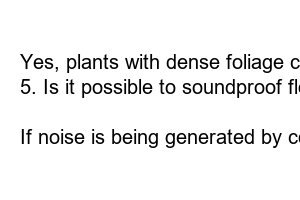층간소음 신고
Title: Dealing with Noise Between Floors: Tips and Solutions
Introduction:
Living in an apartment or a multi-story building can be a wonderful experience, but it can also come with its challenges. One common issue faced by many is dealing with the noise that travels between floors. Whether it’s the sound of footsteps, music, or even conversations, unwanted noise can disrupt our peace and quiet. In this blog post, we will explore some effective strategies to tackle and reduce noise between floors, allowing you to enjoy a more serene living environment.
1. Identify the Source of the Noise:
To effectively combat noise between floors, it’s crucial to determine its origin. Is it coming from the unit above or below you? Identifying the source will help you implement the most appropriate solutions.
2. Use Rugs and Carpets:
Uncovered floors can amplify noise transmission. By placing rugs or carpets on the floors, you can significantly reduce the impact of footsteps and other sounds. The thicker the rug or carpet, the better the sound absorption.
3. Consider Acoustic Underlayment:
If noise remains an issue despite using rugs, acoustic underlayment is worth considering. Designed to absorb and block sound, it acts as a barrier between the flooring and the subfloor, reducing noise transmission significantly.
4. Install Soundproofing Wall Panels:
Noise can travel not only horizontally but also vertically through the walls. Installing soundproofing wall panels can mitigate this problem. These panels are designed to absorb sound waves and prevent their transmission, resulting in a quieter living space.
5. Discuss the Issue with Neighbors:
Sometimes, noise issues can be resolved by simply having an open and polite conversation with neighbors. Informing them about the disturbance and requesting their cooperation in reducing noise levels can often lead to positive outcomes.
6. Utilize White Noise Machines or Sound Apps:
If all else fails, consider using white noise machines or sound apps. These devices emit soothing sounds that can effectively mask unwanted noise, making it less noticeable and easier to ignore.
Summary:
Living in a multi-story building doesn’t mean you have to tolerate excessive noise. By identifying the source of the noise, using rugs or carpets, installing acoustic underlayment, considering soundproofing wall panels, discussing the issue with neighbors, and utilizing white noise machines or sound apps, you can significantly reduce noise between floors. Remember, a peaceful and quiet living environment is essential for your well-being and relaxation. Don’t hesitate to take action and improve your living space today.
FAQs:
1. Can heavy furniture help reduce noise between floors?
Yes, placing heavy furniture, such as bookshelves or cabinets, against the shared walls can help absorb sound and reduce noise transmission.
2. Can weatherstripping doors and windows help with noise reduction?
Yes, adding weatherstripping to doors and windows can help create a tighter seal, reducing noise penetration.
3. Are there any noise-canceling headphones you would recommend?
Some popular options for noise-canceling headphones include Bose QuietComfort, Sony WH-1000XM3, and Sennheiser Momentum Wireless.
4. Can plants help absorb sound and reduce noise?
Yes, plants with dense foliage can act as natural sound absorbers and help in reducing noise levels.
5. Is it possible to soundproof floors between apartments or condos?
While soundproofing an entire floor between units can be challenging, using rugs, carpets, and underlayment can significantly reduce noise transmission.
6. How do I deal with excessive noise from construction or renovation activities in adjacent units?
If noise is being generated by construction or renovation activities, it’s best to communicate with the building management or the contractors to address the issue and find a suitable resolution.

